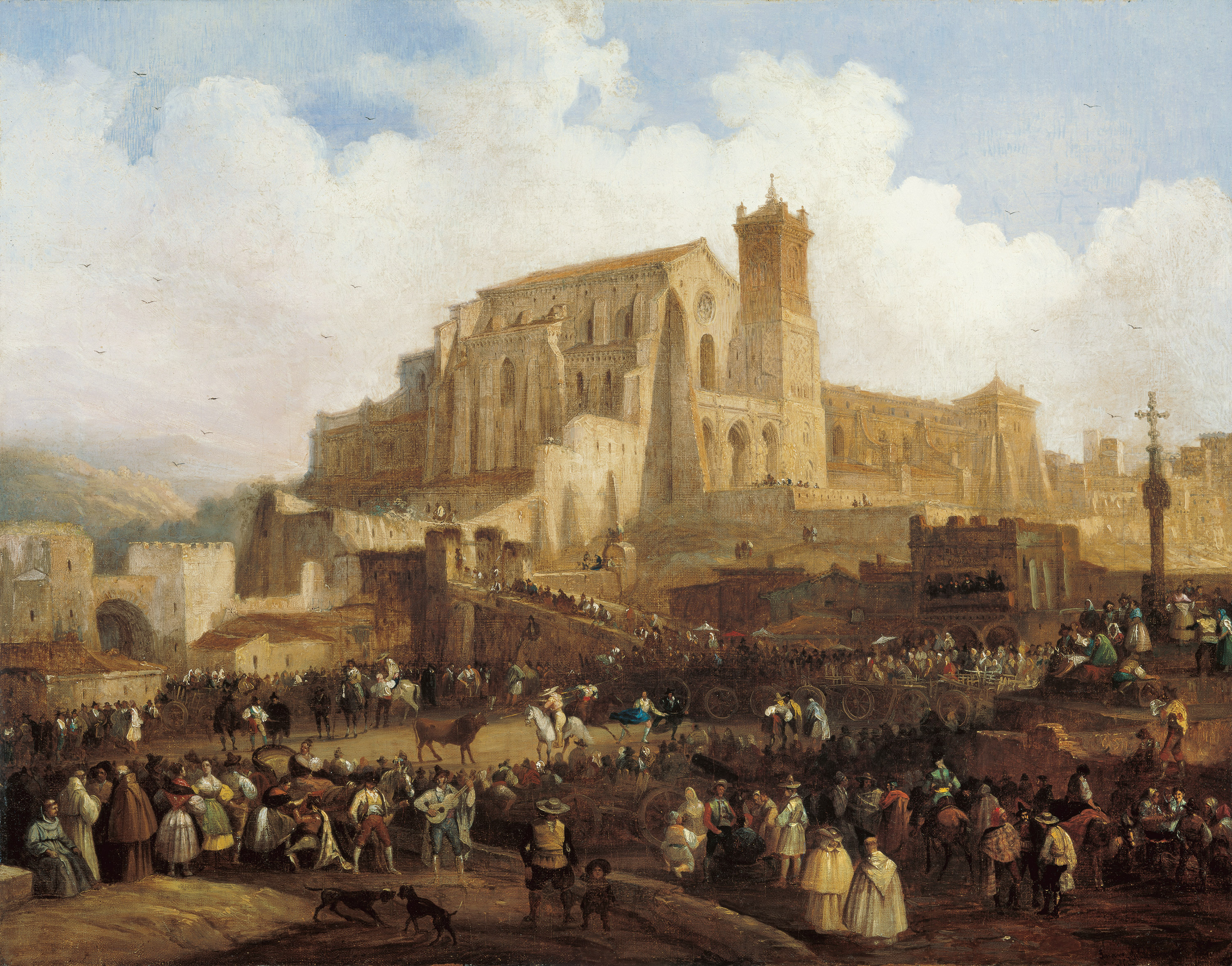
Genaro Pérez Villaamil
Bullfight in Guadalajara
1838-
Oil on canvas
64 x 81.5 cm
CTB.2000.68
-
© Colección Carmen Thyssen-Bornemisza en préstamo gratuito al Museo Carmen Thyssen Málaga
A bullfight is being held on an area of level ground outside the walls of a village beneath the imposing silhouette of a grandiose, monumental church that towers majestically above the scene on a small hillock.
The village can be identified as Guadalajara, although the painter altered its real appearance. One of the sketches that Villaamil draw from the natural when visiting Guadalajara in 1837 (kept in the Museo Nacional de Escultura, in Valladolid) entitled «Huerta de S. Francisco», and an engraving published in the third volume of his España artística y monumental (1850) confirm that this is the setting for this popular scene. Painted in 1838, the image shows the church and monastery of San Francisco standing out on the hill and the Door of Bejanque at the left.
The bullfight takes place in the centre of the ring, which is formed by wagons arranged in a circle. Watched by a bustling crowd, a picador is about to weaken the bull with his lance, while other bullfighters around him perform distracting manoeuvres. On the balcony of the building that stands out from the group of houses on the right is the presidential box in which the black-clad local authorities can be distinguished. Locals are grouped around the cross erected at the boundary stone on that side to gain a better view of the action. Meanwhile, visible in the foreground is the motley crowd of friars, country folk, ladies riding in open-topped caleches, stallholders, musicians and street vendors who take part in the festivities.
This spectacular painting, practically unknown until its appearance on the Madrid art market in 2000, is one of the most interesting works from the early part of Genaro Pérez Villaamil’s mature period. Dated 1838, it is undoubtedly the finest and most striking of all the paintings the Galician master produced on the same theme that year. At least two more versions are known with the same title, but they are less impressive than the present painting in composition and overall effect.
Here Villaamil puts his best skills to work in producing a monumental, picturesque landscape, a genre of which he was the absolute master in Spanish painting of his day. He displays his inventive flair to the full in recreating the appearance of Guadalajara with an astonishing scenographic effect, overlooked by the impressive architecture of the church of San Francisco built from the real architectural features that Villaamil sketched in situ, later combining them in his studio with a curious eclecticism steeped in the most genuine Romantic spirit to give them a lifelike appearance but altering the real forms and dimensions.
Villaamil furthermore envelops the village’s various buildings in a golden glow, causing their outlines to stand out by setting them against the light and using shadows applied with the subtle tinted glazes characteristic of his style to achieve a curious appearance of reality that gives these Spanish-inspired fanciful, picturesque landscapes an irresistible appeal, enhanced by the bustling crowds who populate them. Indeed, unlike many of Villaamil’s landscapes in which the presence of the figures is absolutely secondary, here the painter gives great prominence to the festivities taking place in the village, bathing it in the first shadows of twilight so that it stands out even more powerfully against the monumental architecture silhouetted against a pale, cloudy sky across which numerous birds fly. Villaamil takes care over each of the figures, which he renders in exquisite detail in order to emphasise the most picturesque aspects of their appearance and attire, giving them an intensely folk flavour that adds to the compelling charm of the painting.
José Luis Díez